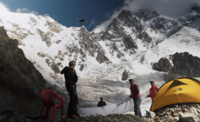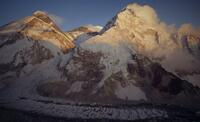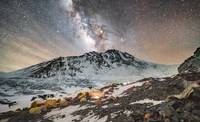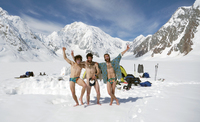Film
The Wall Of Shadows
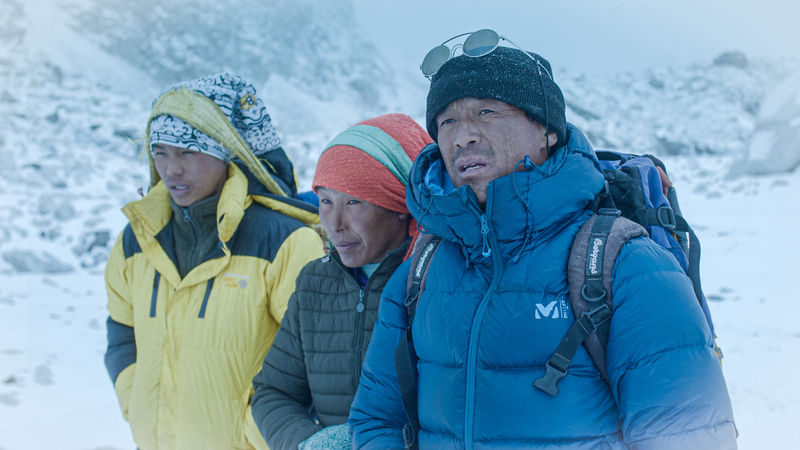
About
Director
Eliza Kubarska
Producer
Monika Braid, Erik Winker, Umit Uludag, Kaspar Winkler, Martin Roelly, Sabine Girsberger
Running time
94 minutes
Country / Nationality
Poland, Germany, Switzerland
Our Judges say:
 An honest account of the conflicts, realities and sacrifices involved with high altitude expedition climbing and the difficult cultural decisions that it forces.
An honest account of the conflicts, realities and sacrifices involved with high altitude expedition climbing and the difficult cultural decisions that it forces.Jimmy Hyland
 A mind blowing film: a long, slow portrait of Nepalese people's culture, and the ethical challenges around climbing, Kumbakharna, a sacred and dangerous mountain.
A mind blowing film: a long, slow portrait of Nepalese people's culture, and the ethical challenges around climbing, Kumbakharna, a sacred and dangerous mountain.Paul Hodgson Music Judge
 A original treatment of the mountain narrative. You will be completely immersed.
A original treatment of the mountain narrative. You will be completely immersed.Claire Carter Writer, Film Officer for Kendal Mountain Festival, 'Creative Consultant'.
In faraway Eastern Nepal, there is a holy mountain Kumbhakarna (aka Jannu). Its peak is home to gods and demons. No man can touch its slopes and it is believed that a Sherpa who dares set foot on the mountain, will die. It is also a Himalayan peak (7710m) famous for its 3000m unclimbed east face, the most difficult climb in modern alpinism and the top trophy. The Westerners’ and local people’s attitude to the mountain is a world apart. At the foot of Kumbhakarna at 4000 m lays a small Sherpa village Kambachen. There are just 30 houses and in one of them lives Ngada Sherpa and his family. Ngada is born and bred in the mountains. He is the best high-altitude porter in the area: he carries equipment and sets the ropes for alpinists up to the summits, very often risking his life with little in return. He has climbed nine times Everest, two times Kanchenjunga. His wife, Jomdoe Sherpa works as a common porter, carrying heavy loads on steep icy tracks to base camps. They have a son – 16-year-old Dawa. The life in the Himalayas at this altitude is a struggle for survival. Despite the fact that for a decade Ngada has worked with international expeditions, his family lives on the edge of poverty. When the father works in the mountains, his wife and son, who just completed his primary school, work in the fields planting and harvesting potatoes. Dawa dreams of becoming a doctor, but his family cannot afford his further education. One day Ngada is offered work on an expedition to the forbidden Kumbhakarna. Taking part is opposing his faith and lamas’ warnings. The stakes are high. If Ngada agrees, he will earn big money, much more than on other expeditions, and pay for first two years of Dawa's medical school in Kathmandu. In February 2019 the expedition of the world-class alpinists starts on Jannu with the aim to conquer the unclimbed wall of the mountain. There are Marcin Tomaszewski, one of the most prominent Polish climbers and two eminent Russian climbers, Dmitry Golovchenko and Sergey Nilov, the double recipients of ‘the climbing Oscar’: Piolet d’Or. The Sherpa family accompanies the expedition. The helicopter lands in the village and the climbers are greeted by Ngada and Dawa, while Jomdoe is praying to Dalai Lama in their hut. The massive snow fall will not leave the expedition to the end and it is only the beginning of mounting up troubles. Will Gods of Kumbhakarna forgive the people for their insolence. Telling a story from the Sherpas’ perspective, we will present the meeting of two worlds and the clash of values.
Sustainability Notes
Director’s Note Eliza Kubarska
Even though in the last years a few films about Sherpas appeared, after decades when the plight of the Sherpas has been neglected by filmmakers, none of these attempts retained the entire point of view of the locals.
This is a story of an exploration of the most difficult wall in the Himalayas; the story of one of the last holy mountains on earth. The story of strongly motivated people who cannot escape their fate. This gives us a chance to create not only a film in a grand cinematic style, but also a universal story about the dualism of the world and conflict between humans and nature.
The first time I took part in an expedition to the highest mountains I was one of the alpinists. It was 10 years ago in Karakorum, in Pakistan. I was shocked to learn the conditions the local porters had to work in. They received from the agency that employed them just one pair of socks and rubber shoes. They didn’t have tents or sleeping bags. Their task was to carry 35 kg packs to the base camp at 4000m. On the way they built stone camps, for the night they covered themselves with plastic foil and kept a small fire going to keep them warm. Every night we could hear them singing. They woke up before us and were ready to continue the trek. Some served us, set our tents and cooked our meals. I feltembarrassed.
The situation from Karakorum repeats itself in the Himalaya with a difference that Muslims from Pakistan did not see mountains as sacred. Here, in Nepal, Sherpas see Himalayas as the kingdom of gods.
In 2015, I wrote and directed a documentary K2. Touching the Sky, a story of children of alpinists who died on K2, the second highest mountain in the world. The film, which was shot in Karakorum, at the altitude of 5300m, posed the question about the price of passion. In 2014 we made Walking Under Water, a partly underwater story about sea nomads from Borneo. It was an introduction to the work with native people. Our present project, “The Wall of Shadows” connects my enchantment with mountains and culture of local people. It touches the important subject of the Nepali porters and the discord between two different worlds.
I believe that “The Wall of Shadows” will be a universal story that on many levels will touch many aspects of human existence. The story of a man battling nature and about searching for what is the most meaningful in life. It is our sincere desire to engage viewers in empathy for our characters who are strangers to our culture, but on the human level are exactly like us. Finally, it is a story of parental love that goes beyond religious rules.
I met the family of Nada, Jomode and Dawa in September 2016. My visit took a month. During this time, I was living in the village of Kambachen and Ghunsa with them, gaining their trust and full collaboration. They told me about their secret plan. I was there, because I already knew from a Polish alpinist about the idea for the expedition to Kumbhakarna. I knew that the expedition will hire climbing Sherpas from Kambachen village. I wanted to meet Nada and learn more about the holiness of the Kumbhakarna. During my visit, I learnt that breaking the law of Lamas and Kumbhakarna’s gods will be disastrous.
As a climber myself, I have first-hand contacts in climbing circles. I’m presently fully participating in the planning for the Kumbhakarna expedition. The alpinists know of our intention to film them and they are willing to cooperate.

